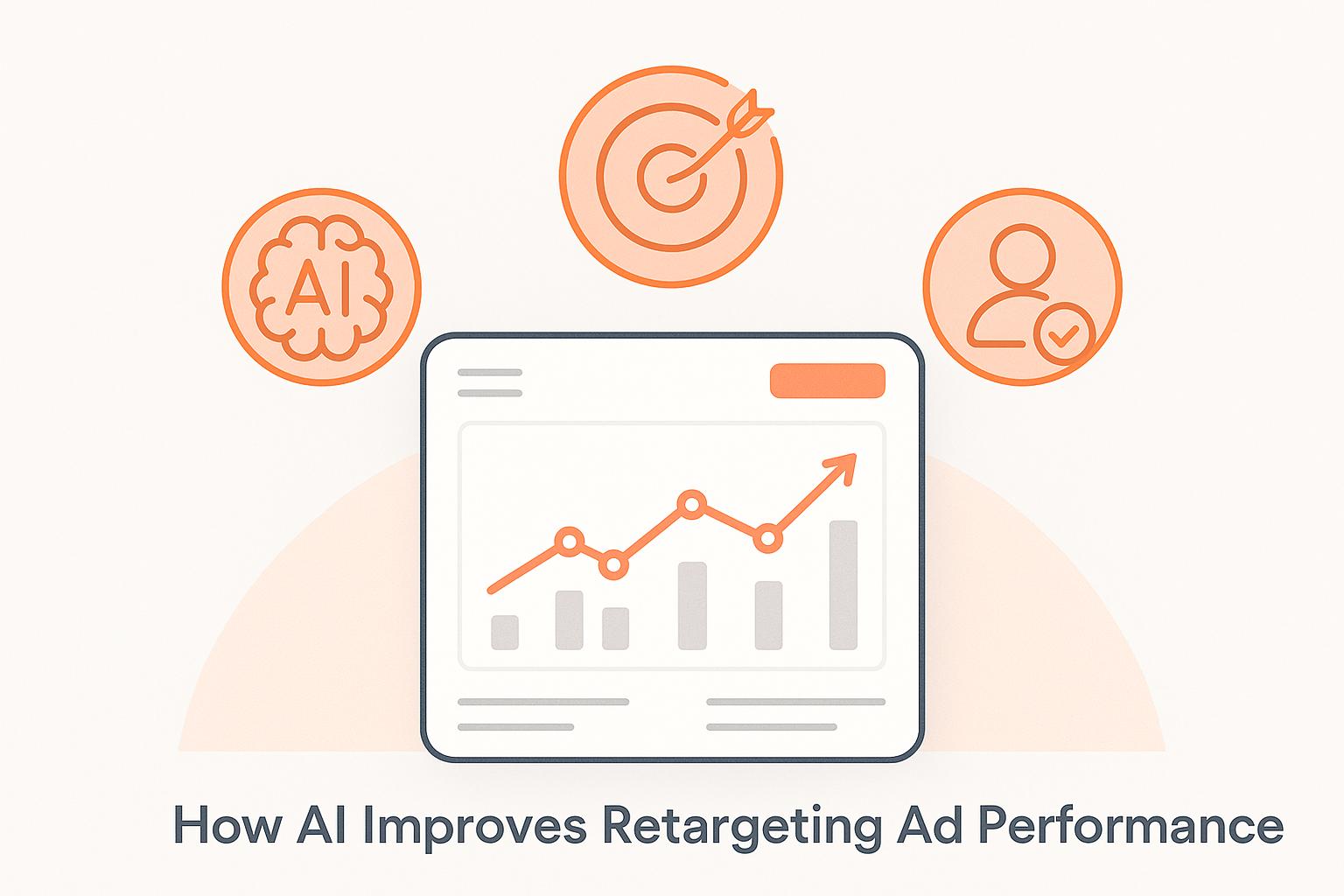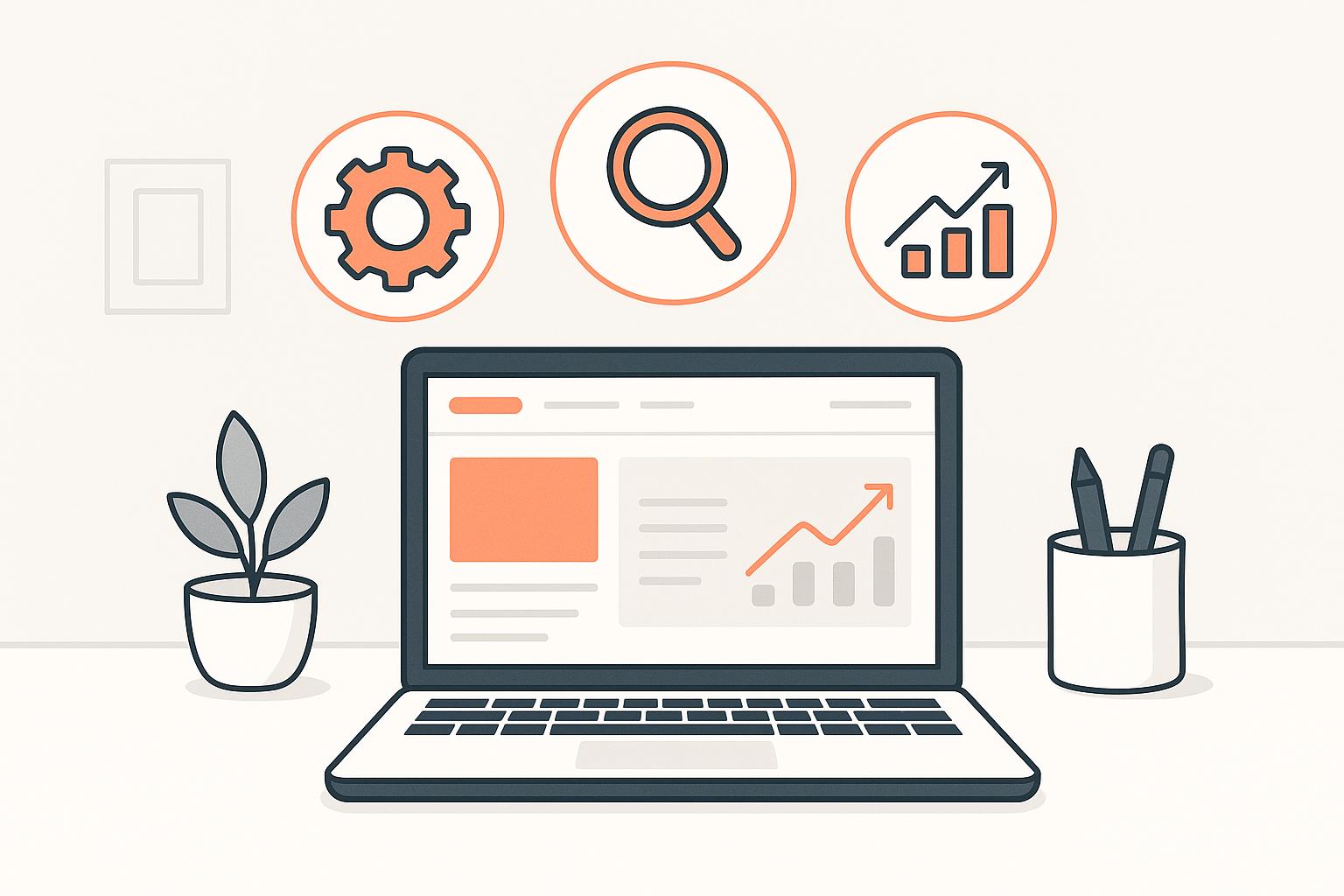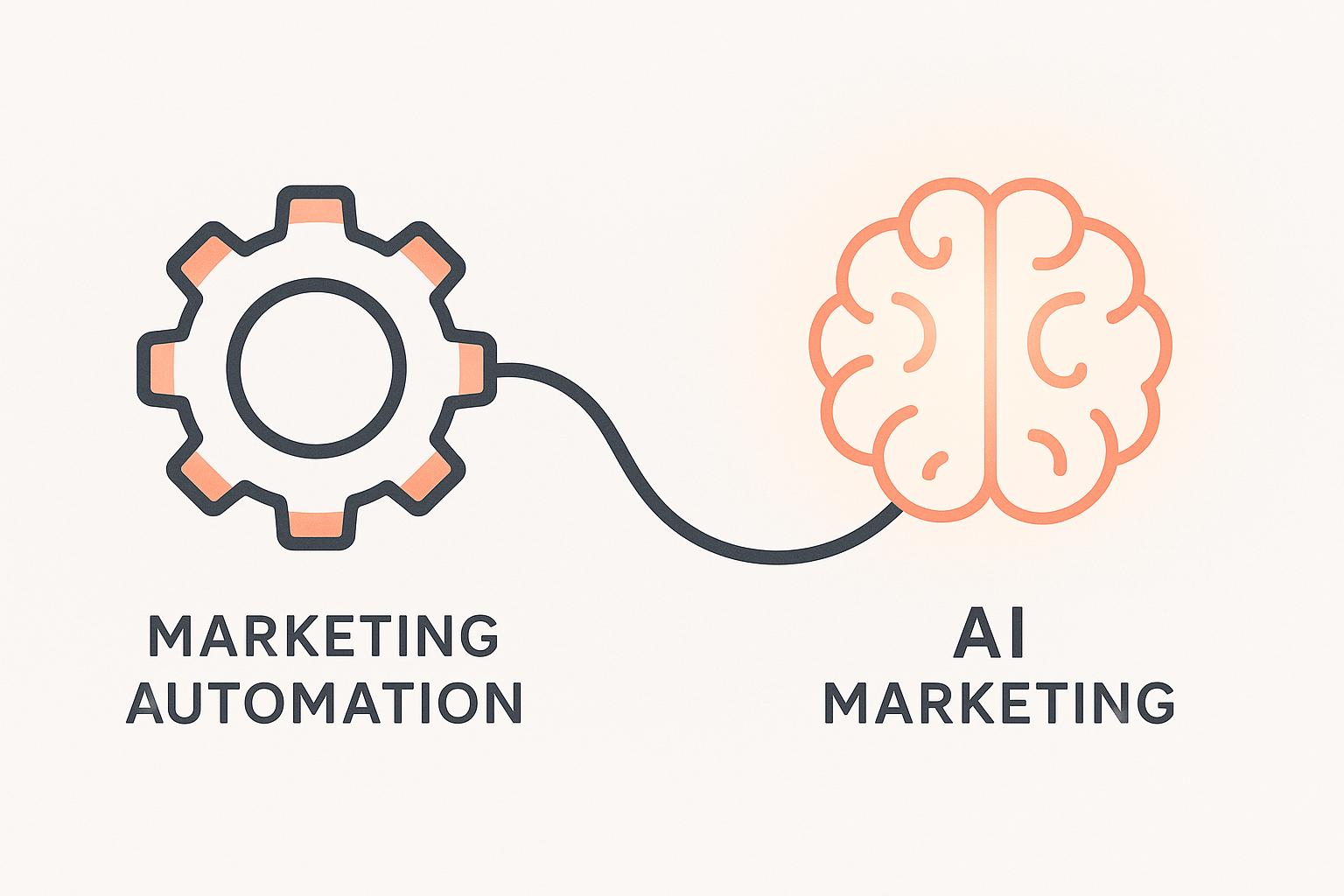AI content optimization tools are transforming how businesses improve SEO, readability, and engagement. They analyze data, suggest improvements, and save time, making them indispensable for marketers in 2025. Here's why they're essential:
- Efficiency: Analyze content in minutes, saving hours of manual work.
- Better SEO: Identify high-performing keywords and refine content to boost rankings.
- Improved Engagement: Tailor content to audience preferences for higher interaction.
- Competitive Insights: Evaluate competitors to uncover opportunities.
Top tools like Clearscope, Dashword, and GrowthBar offer features like real-time scoring, keyword research, and performance tracking. Choosing the right tool depends on your goals, budget, and workflow. Combine these tools with human creativity to produce impactful content that resonates with your audience.
I Used These 10 AI Tools and My Website Traffic Exploded! 🚀 ( Most Are Free!)
What is AI Content Optimization?
AI content optimization involves using artificial intelligence to analyze and improve your content for better SEO, readability, and audience engagement. Unlike the traditional approach - which depends on manual research and human expertise - AI tools rely on machine learning, natural language processing (NLP), and data analysis to understand user intent and offer precise recommendations for improvement.
Think of it as having a data scientist, SEO expert, and content strategist working on your content 24/7. These tools evaluate everything - keyword density, semantic relationships, user behavior, and even competitor strategies - to provide actionable insights that help your content perform better in search rankings and resonate with readers.
The technology behind AI content optimization includes several key features. Natural Language Processing (NLP) enables AI to grasp the context and meaning of your content, while semantic analysis identifies related topics and concepts. Topic modeling highlights content gaps and opportunities, and entity recognition ensures your content addresses the key subjects your audience cares about.
"AI content optimization surpasses traditional SEO by using advanced machine learning algorithms to understand patterns and user intent, providing more personalized and precise recommendations for content improvement. This leads to more effective content strategies that drive engagement." – Jaden Montag, Business Marketing Graduate
AI-powered tools can accomplish in minutes what might take hours for humans, offering recommendations on everything from keyword research and competitor analysis to real-time content scoring and optimization [4, 15].
Next, let’s dive into the benefits these tools bring and how they stack up against AI content creation tools.
Benefits of AI in Content Optimization
The advantages of using AI for content optimization go far beyond saving time. In fact, 80% of marketers reported that AI tools exceeded their ROI expectations last year. Here’s how AI content optimization can make a difference:
- Boosted efficiency: AI tools can analyze and provide optimization suggestions for your content within minutes, saving hours of manual effort. This efficiency has led 20% of marketing teams to allocate over 40% of their budgets to AI-driven campaigns, seeing measurable returns.
- Enhanced content quality: By refining readability, engagement potential, and user intent alignment, AI helps create sharper, more impactful content. For example, a fintech startup used AI to identify niche topics, craft data-driven content briefs, and refine articles, resulting in a 200% increase in blog readership, a 50% rise in average time on page, and significant growth in newsletter subscribers.
- Smarter keyword targeting: AI tools pinpoint high-performing keywords and phrases that resonate with your audience, eliminating guesswork. A B2B SaaS company revamped its blog using AI, leading to a 150% increase in organic traffic and a 70% boost in demo requests from search traffic within six months.
- In-depth competitive analysis: AI tools can evaluate thousands of competitor pages, uncover content gaps, and reveal opportunities you might otherwise miss. This helps you stay ahead of industry trends and strategically position your content.
One standout example is an online fashion retailer that revamped its product listings using AI content optimization. The results? A 25% increase in conversion rates for optimized products, a 15% drop in cart abandonment, and a surge in organic traffic to product pages.
AI Content Optimization vs. AI Content Creation
Understanding the difference between AI content optimization and AI content creation is key to choosing the right tools for your strategy. While both use AI, their purposes and approaches differ significantly.
AI content creation focuses on generating new content from prompts, outlines, or ideas.
On the other hand, AI content optimization works with what you’ve already created, analyzing it to improve readability, engagement, and search performance. It uses technologies like semantic analysis, topic modeling, and entity recognition to ensure your content aligns with user intent and search trends.
Traditional SEO often relies on manual research and expertise, while AI optimization tools leverage machine learning, NLP, and algorithms to process competitor data, search trends, and user behavior at an unmatched scale.
The goals also differ: SEO aims to get your site on page one of search results, while AI optimization aims to secure the coveted answer box spot. This reflects the shift toward conversational, AI-powered search experiences.
In practice, many successful strategies combine both tools. For example, you might use AI content creation to draft initial ideas or brainstorm, and then turn to AI content optimization to refine and enhance those drafts for better performance. Specialized optimization tools often provide deeper, more targeted insights than all-in-one platforms, making them a must-have for serious content marketers.
The key is knowing when to use each approach. If you’re looking for fresh ideas or need help getting started, AI content creation tools are your best bet. But when it’s time to fine-tune your content for maximum impact, AI content optimization tools are indispensable.
Top AI Content Optimization Tools in 2025
AI is reshaping content creation, with 96% of companies planning to incorporate generative AI into their strategies by 2025. If you're looking to stay ahead, here are some of the standout tools making waves this year:
AI Marketing List
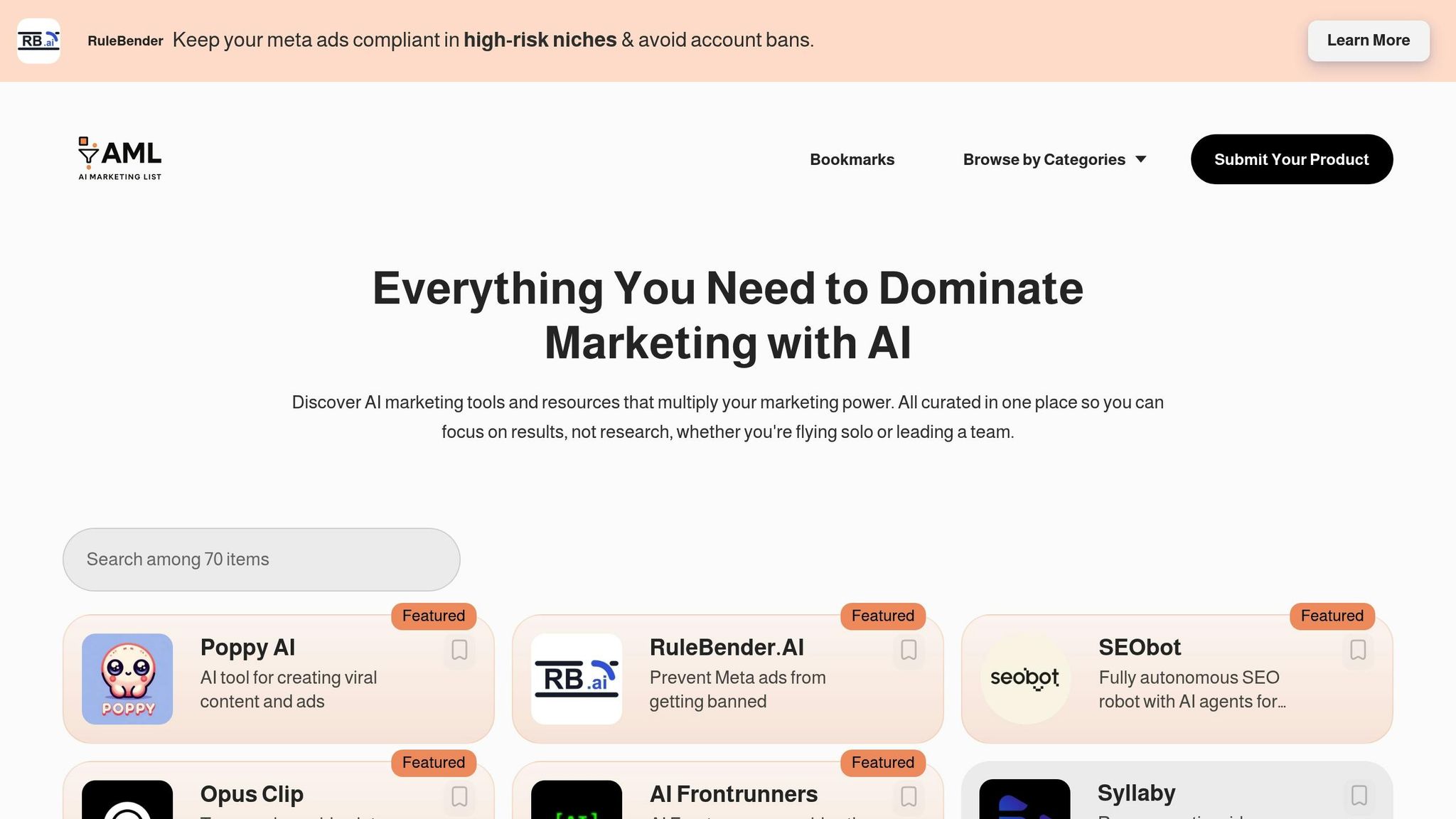
AI Marketing List serves as a comprehensive directory, organizing AI marketing tools into categories like Content Creation and SEO & Keyword Research. It simplifies the process of comparing features, pricing, and product links, making it easy to find the right fit for your content strategy. Whether you're a solo entrepreneur or part of a larger team, this platform is designed to meet a variety of needs.
Explore the full array of tools available at AI Marketing List.
Clearscope
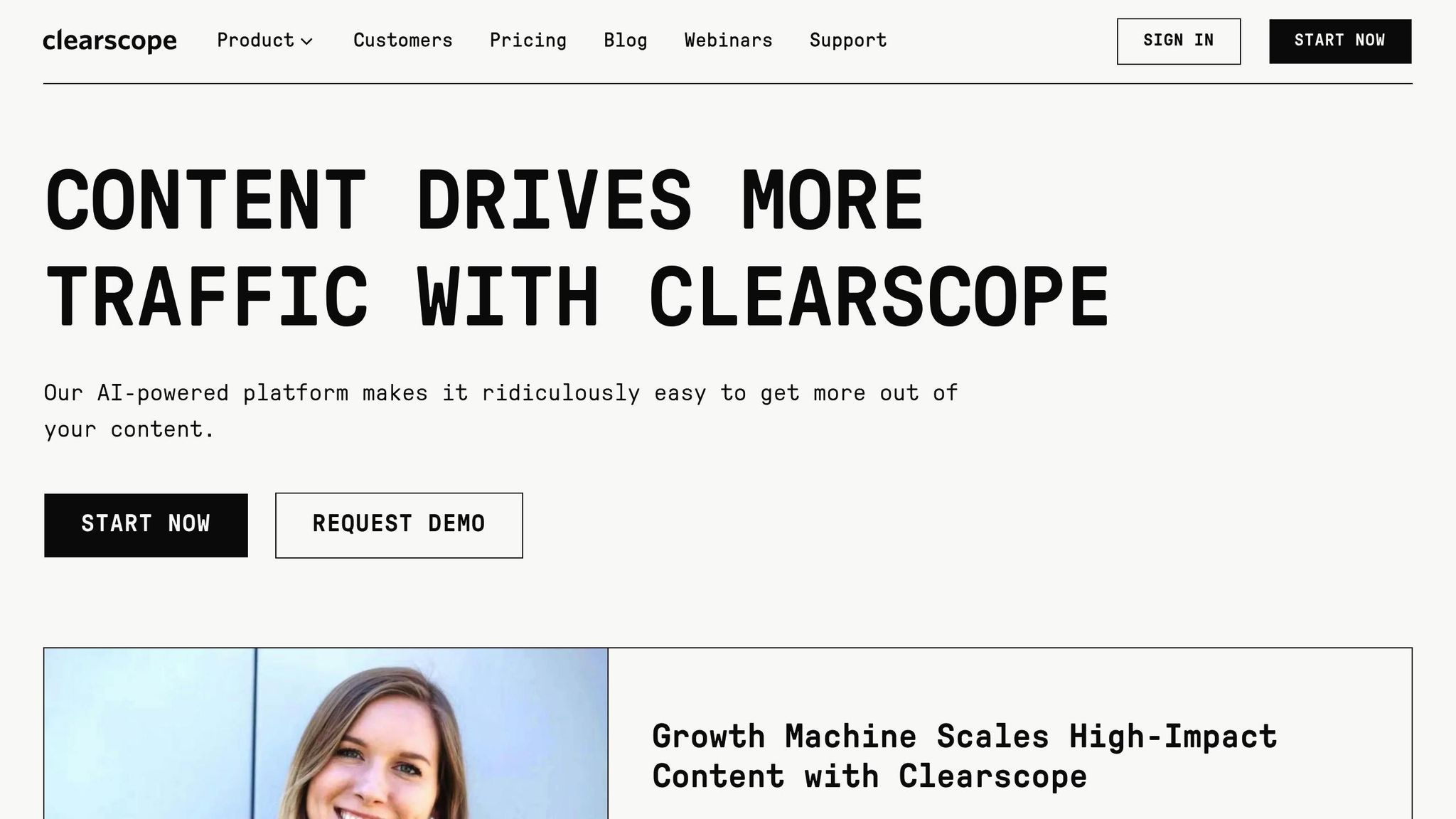
Clearscope is a top-tier tool offering real-time content scoring and readability analysis, seamlessly integrated into platforms like Google Docs. Its focus on in-line optimization makes it a favorite for teams handling high-volume publishing or intricate SEO strategies. Pricing begins at $189/month for the Essentials plan, scaling up to $399/month for the Business plan. As Kevin Su, Clearscope’s founder, puts it:
"We delight our customers with better results and a better experience than they expect."
Dashword

Dashword simplifies keyword research by turning it into actionable, AI-powered content briefs. It also tracks performance, helping teams connect optimizations to tangible business outcomes. With plans starting at $99/month for the Starter tier and $199/month for the Growth tier, Dashword offers a structured approach for teams looking for detailed workflows and reporting.
GrowthBar
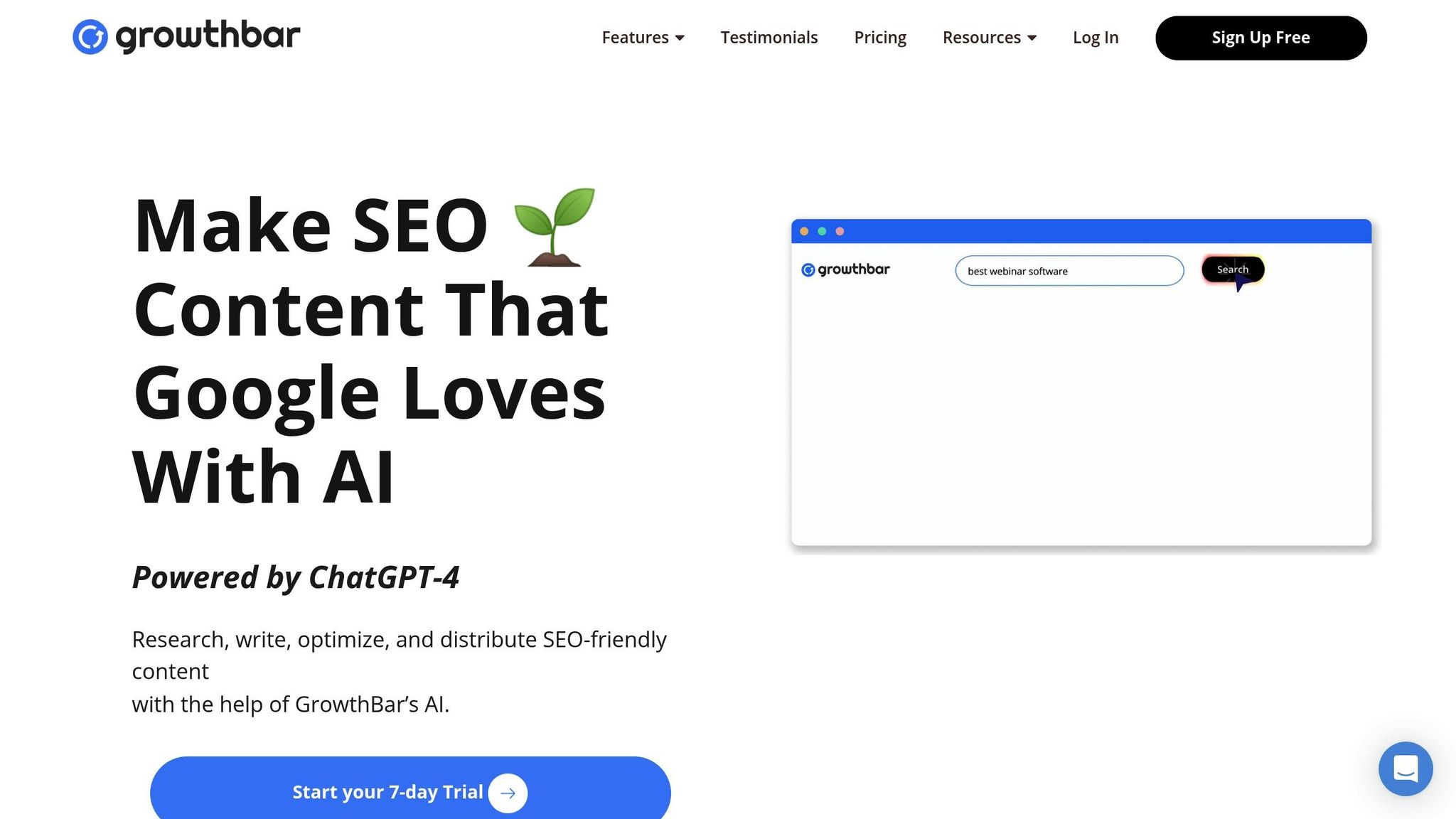
GrowthBar combines simplicity and functionality, offering keyword research and site audit tools in one platform. Tailored for small businesses and solo creators, it focuses on improving blog content and search performance without the complexity of enterprise-level solutions.
AthenaHQ

AthenaHQ is built for today’s search environment, prioritizing features that help content secure featured snippets and answer box placements. Its actionable AI recommendations reflect a shift from traditional SEO metrics to strategies that align with how search engines operate now.
Goodie AI
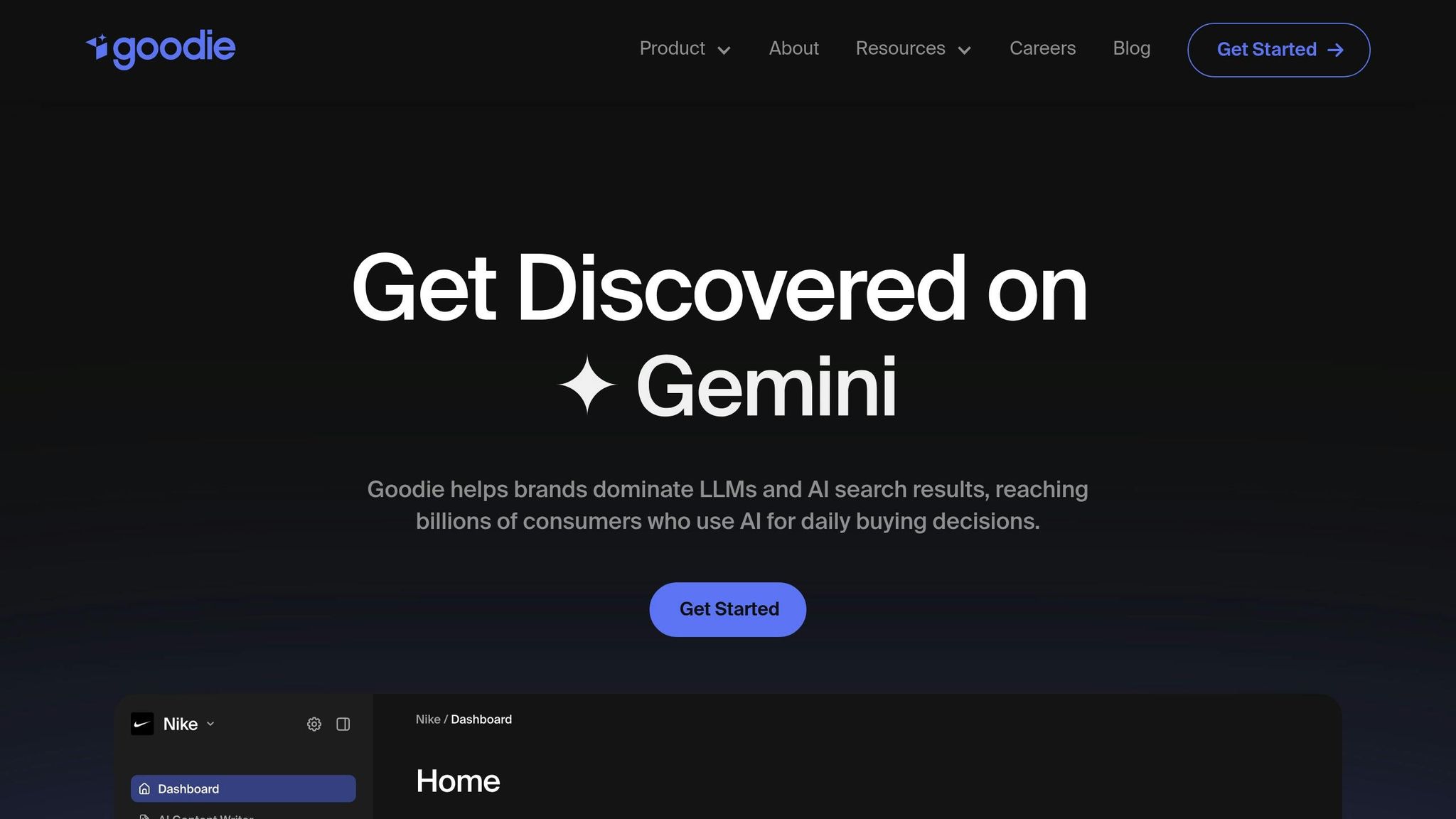
Goodie AI links its recommendations directly to performance metrics, ensuring that every change is tied to measurable improvements in search rankings and engagement. Jill Makin, Senior Content Marketing Strategist at Möve Marketing, emphasizes:
"It is our policy that AI supports our work instead of replacing it, so we review any AI-generated text carefully."
Choosing the right tool depends on your specific content challenges. These options offer a range of features to help you optimize your strategy effectively.
sbb-itb-ad96eed
How to Choose the Right AI Content Optimization Tool
Picking the right AI content optimization tool can significantly impact your content strategy. With so many options out there, it’s easy to feel overwhelmed by the sheer number of features. The key is to focus on what aligns with your specific needs and goals. This guide will help you navigate the decision-making process and find a tool that bridges advanced AI capabilities with your everyday content tasks.
Key Features to Consider
When evaluating tools, prioritize those that integrate smoothly into your existing workflow and address your core challenges:
- Integration Capabilities: Check if the tool works seamlessly with your CMS or other platforms you already use.
- Real-Time Feedback: Look for tools that provide instant suggestions as you create content, rather than waiting for post-production analysis. For example, AI-powered solutions can increase productivity by up to 40% and boost engagement rates by over 25%.
- Brand Voice Customization: Ensure the tool can adapt to your brand’s tone, style, and terminology for consistent messaging.
- Predictive Analytics & Competitor Insights: Tools that track SERP performance and analyze competitors can help you stay ahead of trends.
- Ease of Use: A user-friendly interface is essential. Even the most powerful features won’t matter if your team struggles to use them. Look for intuitive dashboards that require little to no training.
- Data Security: Verify that the tool complies with regulations like GDPR and CCPA, especially if you handle sensitive customer data.
Ultimately, the right tool should solve your unique challenges, integrate effortlessly into your workflow, and deliver measurable ROI - ideally within 30–60 days. Transparency in AI decision-making and a commitment to data privacy are also crucial.
Feature and Pricing Comparison Table
Here’s a quick comparison of popular AI content optimization tools, highlighting their features, pricing, and integration options:
| Tool | Monthly Price | Key Features | Best For | Integration |
|---|---|---|---|---|
| Clearscope | $189 | Real-time scoring, Google Docs integration, readability analysis | High-volume publishers, enterprise teams | Google Docs, WordPress |
| Dashword | $99 | AI content briefs, performance tracking, keyword research | Teams focused on workflow and reporting | Multiple CMS platforms |
| MarketMuse | $149 | Personalized metrics, site-level analysis, content clusters | Content strategists, large sites | Various platforms |
| Surfer SEO | $59–$239 | Complete SEO toolkit, content editor, SERP analyzer | Small to medium businesses | WordPress, Google Docs |
| SE Ranking | $65 | Full SEO suite, content optimization, rank tracking | Budget-conscious teams | Multiple integrations |
| ContentShake AI | $60 | Semrush integration, AI writing, content planning | Semrush users, content creators | Semrush ecosystem |
Making the Right Choice
Price alone shouldn’t dictate your decision. A tool costing $400 per month that drives significant organic traffic could be a smarter investment than a $50 tool that barely moves the needle. If you’re just starting out, consider tools that offer prompt-based content suggestions. As your needs grow, you can transition to platforms that automate entire workflows.
Many successful teams begin with mid-tier solutions and upgrade once they’ve proven the value of AI-driven optimization. At the end of the day, a simple tool that fits your team’s needs and gets used consistently will outperform a complex platform that sits idle.
Best Practices for Using AI Tools in Content Optimization
To make the most of AI tools in content optimization, focus on combining the analytical power of AI with the creativity and emotional insight only humans can provide. The aim isn’t to let AI take over your voice but to use it as a tool to amplify your message - keeping your content genuine and relatable to your audience.
Balancing AI Insights with Human Creativity
AI excels at crunching data, uncovering keyword opportunities, analyzing competitors, and tracking performance metrics. But it falls short when it comes to the emotional depth, storytelling, and nuanced understanding that make content truly engaging. This is why human-authored content still generates 5.4 times more traffic compared to purely AI-generated material.
"By blending AI efficiency with human creativity, brands can achieve authentic connections that resonate deeply with audiences. Striking this balance isn't just a best practice - it's essential for long-term marketing success." - Bluetext
Transparency is key to building trust with your audience. With 94% of people expressing concerns about AI-generated misinformation, it’s important to be clear about when and how AI is used in your content creation process. Human involvement remains critical - 45% of marketers who use AI-generated content report spending significant time editing and refining it. This extra layer of human oversight ensures the final product aligns with your brand and adds real value.
AI can analyze user preferences and suggest tailored strategies, but the execution should reflect human understanding and creativity.
"As a marketer, your best asset is your creativity and innovation. This is something that AI cannot replicate (at least now…). But when you combine your marketing expertise, empathy, and relatability with AI, you can boost the impact of your marketing content at scale." - Alina Dallal
Balancing these elements effectively creates a foundation for continuous growth and success in content marketing.
Iterative Content Improvement
The combination of creative input and data-driven insights works best when applied to a process of continuous refinement. AI’s real strength lies in its ability to drive ongoing improvements. Instead of viewing content as a one-and-done effort, successful teams treat it as an evolving project.
Schedule regular content audits - monthly or quarterly - to identify areas for optimization. Use key metrics like page rankings, dwell time, and bounce rate to evaluate what’s working and what needs adjustment. Validate AI-generated recommendations with trusted tools such as Google Keyword Planner or SEMrush to ensure accuracy and relevance. Before rolling out changes across your site, test them on smaller content samples through A/B testing to confirm their effectiveness.
Avoid mechanical keyword stuffing; instead, aim for a natural, engaging flow. Pay attention to user behavior metrics, such as time spent on a page, scroll depth, and conversion rates, to get a well-rounded picture of content performance. These ongoing tweaks are essential to maintaining the kind of high-impact results that set your content apart.
"AI is a game-changer in SEO, offering unparalleled speed and insights. However, remember, quality content is still king." - Gaurav Sharma
While AI can reveal valuable insights, it’s your expertise and understanding of your audience that turn those insights into impactful content. With predictions indicating that 90% of online content could be AI-generated by 2026, the brands that succeed will be those that use AI to enhance their creativity, not replace it. Your unique perspective and connection with your audience remain irreplaceable in creating content that drives meaningful results.
Conclusion
AI content optimization tools are reshaping how businesses operate, boosting performance, simplifying workflows, and delivering measurable outcomes. Between 2023 and 2024, global AI adoption surged from 50% to 72% - a remarkable leap in just a year. By 2024, 65% of organizations had integrated generative AI into their operations, nearly doubling its use compared to 2023.
The tools we've reviewed highlight how AI is enabling predictive strategies, real-time engagement, and creative collaboration. Emerging technologies like voice-driven interfaces and AI-powered augmented reality are also pushing boundaries, offering exciting new ways for brands to connect with their audiences.
The takeaway is clear: embracing AI strategically is no longer optional - it's a must for staying competitive in today's fast-evolving landscape. Christina Inge, author of Marketing Analytics: A Comprehensive Guide and instructor at Harvard's Division of Continuing Education, puts it best:
"Your job will not be taken by AI. It will be taken by a person who knows how to use AI. So, it is very important for marketers to know how to use AI."
Success hinges on continuously learning and testing AI tools to discover what works best for your needs before scaling up. Prioritize mastering areas like targeting, data-driven insights, automation, generative AI, and ethical considerations. Businesses that invest in AI education and develop clear implementation strategies will secure a competitive edge in the marketplace.
Dyani Marvel from Wondr Nation echoes this sentiment:
"AI is not going to replace you, but what it does mean is that you need to know how to use these skills so that you can be the best marketer you can be."
The future belongs to marketers who combine AI's efficiency with human creativity - a partnership we've explored throughout this guide. Keep experimenting, stay adaptable, and build on the innovations shaping the marketing world today.
FAQs
What makes AI content optimization tools different from traditional SEO techniques?
AI content optimization tools bring a fresh approach to SEO by leveraging automation and data analysis. Unlike traditional methods, which depend on manual keyword research and adjustments, these tools can process massive datasets in seconds, uncover trends, and fine-tune content almost instantly.
What sets them apart is their ability to offer tailored recommendations while adapting on the fly to search algorithm updates. Traditional SEO still provides a hands-on, in-depth understanding of search behavior, but AI tools add speed and accuracy, helping marketers navigate the ever-evolving digital space with greater efficiency.
What should I look for when selecting an AI content optimization tool for my business?
When picking an AI content optimization tool, focus on features that match your specific business goals. Choose a tool that integrates seamlessly with your existing platforms, provides precise content analysis, and offers insights tailored to your U.S. audience.
Pay attention to usability, the degree of customization available, and whether the tool accommodates local language preferences and cultural specifics. Also, assess factors like customer support quality, frequency of updates, and whether it aligns with your budget. The right tool will help your content connect with your audience while simplifying your marketing processes.
Can AI tools fully replace human creativity in content marketing?
AI content optimization tools are great for automating repetitive tasks, analyzing complex data, and streamlining processes. But let’s be clear: they can’t replicate the creativity and emotional depth that humans bring to the table. While AI can suggest ideas or point out areas for improvement, it falls short when it comes to understanding emotional nuances, cultural subtleties, and the art of storytelling - key elements in effective content marketing.
The real magic happens when AI and human creativity work together. AI takes care of time-consuming tasks and delivers valuable insights, freeing marketers to focus on what they do best: shaping a brand’s voice, building genuine emotional connections, and crafting original content that resonates. By blending the strengths of both, you can develop a content strategy that’s not just efficient but also impactful.
